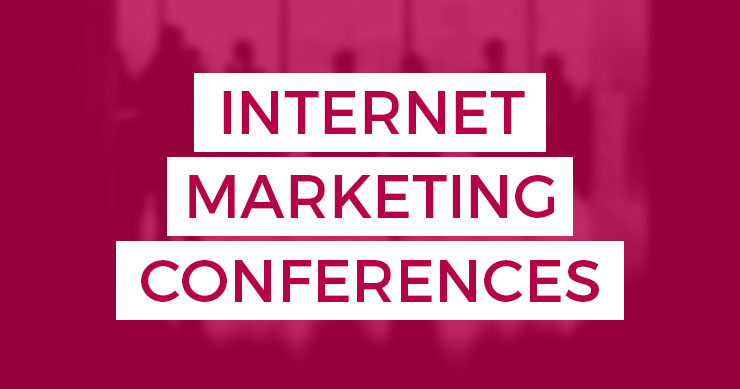Let’s get a hand raise. Who thinks this is the cutest name for a session ever? I KNOW. It’s like I’m at home having a conversation with my father. Assuring him I have a job. And that I’m not starving. And that no, I don’ think I’ll be moving home any time soon. Ah, good times, good times.
We’ve already hit the last session of Day 1, so let’s look alive here, people. Up on the panel we have Shashi Bellamkonda, Kelly Harman, Melanie Mitchell, Ramon Ray. Ready? WOOT!
[Elsewhere, Rae is participating in an Organic Site Review. I’m trying to listen closely to hear the yelling.]
What is an online presence? It’s your personal brand, how you connect with customers, the way you reach out to customers and how you get new business. How do you do that?
- Social media. Twitter is not only for celebrities (um, was it ever?). And if Frito Lays can have a Facebook page, so can you (mmm, chips. I haven’t eaten yet today.).
- Blogs allow you to create thought leadership. You can share experiences and value with your community. Connect with your customers.
- Online selling is becoming easier. You can add a PayPal or Google Checkout button to your Web site. Heck, you can create a Google store in minutes. The barrier to entry is way lower.
Up first is Kelly. Everyone say hi to Kelly.
Are Web sites dead? Absolutely not. Their role, however, is changing dramatically. Your Web site has to be a workhorse for you. You need to use the other tools out there like social media to lead people back to your Web site.
Kelly notes that you need to carry the brand promise that you create on social media through to your main site. It all has to match up. There can’t be a disconnect. When you build your site, the site design should come last. Think of how you’re going to make it first. Think of Craigslist. The design is butt ugly. They focused on usability. They make about $100 million a year and they have 25 employees. The best resource for you is to think about how you use the Internet, where you go, how you read it and how long you stay on different pages.
Use outside resources for the things you’re not good at. You are not a copywriter, nor are you a designer. Contract out these tasks.
Promoting your business: What’s old is new again. People are starting to get jaded with HTML emails. A text email message, if it’s from a real name and from a company you recognize, you’re more likely to read that email.
Web sites are not dead. They’ve just taken on a completely different role. Everything that you’re doing from a social media/PPC perspective has to drive back to the Web site. While you look at using your electronic medium, think of some of the more “old fashioned” tools, as well.
Next up is Ramon.
Web sites are inherently important. They’re the foundation for everything else you can do. He’s gonna go through this really quick.
- Focus on the customer: Don’t build Web sites for you. Build them for customers. Its like the Blue Screen of death that just spits out an error message instead of explaining what happened. Epic fail.
- Have a plan: Don’t create something just because everyone else is. Have a plan of action.
- Easy to remember name: Branding. ‘Nuff said.
- Easy navigation: Have you ever driven in Washington DC? It’s confusing. [Ramon is SCREAMING his presentation. I’m not even kidding. I’d be scared but it’s awesome.] Make it easy for people to do what you want them to do.
- Informative: Have rich content so people want to go to your Web site.
- Security
- Easy customer contact: It’s important that your customers can get in touch with you if they have a problem. People need to know that if they have a problem, there will be a way to reach you.
- Fresh content: Again, be informative.
- Be found: If your Web site has no traffic, it doesn’t mean anything. You want it to be found.
- Be simple: You don’t need to make your site complex with a ton of images and widgets. It’s confusing. Make your site simple.
Melanie is up next. HI MELANIE!
Affiliate Web sites shouldn’t be thin, doorway page sites. They should be valuable and your workhorse. You want to be the expert in your field and give people a reason to come to you.
Where do you fit in? Plenty of free tools to find opportunities.
- Google Keywords Tool
- SEO Book’s Keyword Tool
- Look at trends (Google Trends)
- Monitor the real-time conversation
- Twitter trends
- Quintura
Have a social media strategy
- Listen
- Prepare
- Find the people
- Set rules of engagement
- Define your strategy
- Engage: It’s not about the direct sell.
- Go Offline
The Web site is not dead. Use data to find opportunities. What do people really want and how can you build upon that. Do your research. Have a social media strategy. Don’t just join Twitter if you’re audience isn’t there. Provide value back to the community. Rinse and repeat. The Web site has changed. It’s not the same it was in 1998. It’s not Field of Dreams. You have to give people a reason to come.
So, the lesson is that Web sites are not dead, but they need a lot of nurturing. Got it.
Question & Answer
How do you get links through social media?
Melanie: They do blogger outreach. It depends on your community. Yon can spread your content out that way. Sometimes when you get a story on Digg, journalists will pick it up from there. But that can be really challenging if you’re doing that in a white hat way. It’s about finding people who care about what you have to say and giving it to them.
Do you worry about nofollow and PageRank when you get a link or is a link a link?
Melanie: She doesn’t focus just on the nofollow aspect. Even if a link is nofollowed, it can still drive traffic and exposure back to the main site. it’s better to focus on the big picture than to focus on individual sites.
Shashi: He puts a lot of photos on Flickr and links back to his site. The links are nofollow’d but people follow them back.
How much can you mix personal and e-commerce in social media?
Ramon: If you’re part of a larger company, you need to separate it a bit. If you’re a small company, you can do it all in one.
What about Ning?
Kelly: When you create your own social network, you’re the host. You have to make sure everyone is engaging, everyone is talking to each other and no one is left in the corner alone. And that’s a lot of work — so people often let it fall away.

